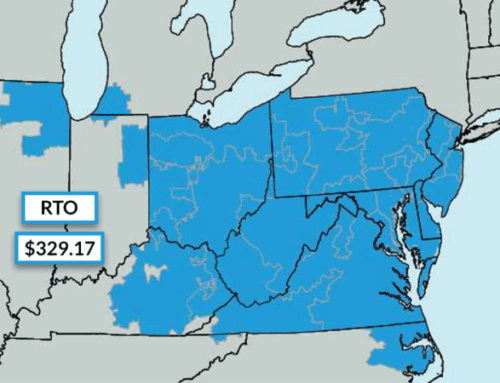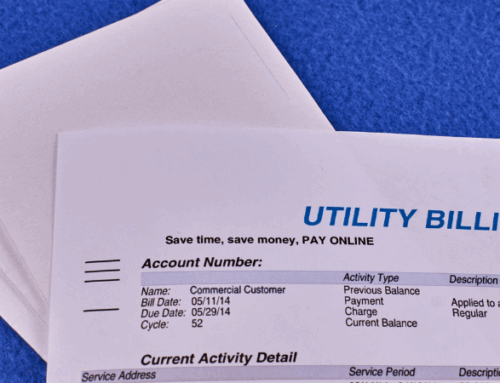In the ever changing energy industry, understanding the energy trading markets is key for customers, energy suppliers, and energy generators alike. The spot market and forward market serve different purposes, allowing businesses, trading companies, and utilities to balance short-term energy needs with long-term planning and risk management. This article looks at the main differences between spot and forward, how they apply to electricity and gas trading, and what it means for energy customers and their bills.
Spot vs. Forward
The spot market is where energy is traded for immediate delivery. This is also known as the “cash” or “physical” market and operates in real time, with prices driven by current supply and demand. Spot prices reflect the cost of energy “on the spot” and can move rapidly due to weather, operational issues or spikes in demand. For example, during extreme weather events or when unexpected outages hit the transmission system, spot prices can skyrocket because of lack of supply and increased demand.
On the other hand, the forward market is where transactions are for future delivery at a price agreed today. These contracts include both custom agreements between parties and standardized futures contracts that are traded on a financial exchange. They allow for the purchase and sale of energy for delivery weeks, months or even years in advance. Forward contracts and futures markets are designed to stabilize future energy costs for buyers and sellers and provide a hedge against spot market volatility.
How Spot And Forward Markets Work
The spot market operates on an auction or exchange basis, where prices move with real-time conditions. Buyers and sellers trade directly to ensure energy supply meets immediate demand. Spot market transactions happen in “day ahead” or “real time” markets, with prices frequently updating to reflect changes in energy demand and supply conditions.
In the forward market, sellers and buyers agree to a future transaction date with a fixed rate. These contracts can be traded on exchanges or between parties, with terms designed to mitigate the risks of spot market price volatility. Forward markets allow entities to forecast and manage costs by fixing a forward rate even as spot rates are unpredictable.
Electricity vs. Natural Gas Spot & Forward Markets
Now we will look at how spot and forward markets work in the wholesale electricity markets and natural gas markets. Both are energy commodities but they trade very differently.
Electricity
The electricity spot market deals with short-term supply and demand fluctuations and offers real-time and day-ahead markets. Electric grid operators use the spot market to manage variations in electricity demand, especially during peak periods when prices can soar due to high demand. Spot prices are important for balancing immediate power needs and ensuring energy distribution, but can be volatile. In these markets, an energy supplier is obligated to pay spot to the grid operator for its customers’ energy consumption. There is a lot of risk involved as prices can fluctuate instantly.
In the forward electricity market, companies can achieve long-term stability and hedge against electricity price spikes. In the same example above, a retail energy supplier might purchase futures contracts or enter into a forward agreement with a trading company, in order to offset its spot risk. Electric generators also utilize forward contracts to secure favorable prices for their generation. If the generator were to simply rely on the spot market, it could lose substantial amounts of money when prices are too low to earn a profit.
Natural Gas
The natural gas spot market works similarly to the power markets, as prices are for immediate delivery based on real-time supply and demand. Seasonal changes, storage levels, and extreme weather impact spot gas prices, making them very volatile. The forward market for natural gas allows businesses to hedge against these risks, get gas at a fixed price, and reduce exposure to future price movements.
For energy stakeholders it’s important to understand both markets in electricity and natural gas to optimize purchasing strategies and navigate the deregulated markets. For example, shopping for retail energy suppliers that offer long-term fixed contracts in the forward market can be a beneficial practice for customers looking for lower rates, especially when spot market prices go up.
Advantages of Each Market
Spot Market Advantages:
- Flexibility: Spot markets allow for immediate energy purchases and are useful for meeting unexpected demand or taking advantage of low prices.
- Price Signals: Spot prices give a transparent view of current supply and demand, which is valuable information on market conditions.
- No Long-Term Commitment: Spot purchases avoid long-term contract obligations and are suitable for short-term needs.
Forward Market Advantages:
- Cost Certainty: Forward markets allow businesses to fix energy prices and reduce budget uncertainty and exposure to price spikes.
- Hedging Against Volatility: By getting future energy needs at a fixed price, customers can hedge against spot price volatility.
- Long-Term Planning: Forward contracts support long-term planning and stability and are useful for organizations with predictable energy needs.
Disadvantages of Each Market
Spot Market Disadvantages:
- Price Volatility: Spot prices can be unpredictable, especially during peak demand times and can be costly.
- Supply Risk: Spot markets can expose energy users to supply shortages as energy is limited during peak demand times.
- Unpredictability: For businesses that need stable and predictable costs, the spot market can be challenging to manage budgets.
Forward Market Disadvantages:
- Lack of Flexibility: Forward contracts are binding, and if spot prices drop below the contracted forward rate, there are limited options.
- Upfront Commitment: These contracts require a longer-term financial commitment, which may not suit all businesses.
- Market Forecasting Risk: Fixing rates based on current market forecasts carries the risk that future conditions may be better than forecasted.
How Each Market Affects Energy Customers
The choice between spot and forward markets can have big implications for energy customers in terms of cost.
- Energy Demand Fluctuations: Customers with high energy demand fluctuations may use the spot market to manage peaks in consumption but must be prepared for price spikes during peak demand times.
- Power Consumption Planning: Businesses with predictable power consumption may find forward contracts useful as they provide stable pricing over time and simplify budgeting.
- Risk Management: Energy customers in deregulated markets often weigh both options, balancing the flexibility of the spot market with the cost certainty of the forward market. Some may use a mixed approach, using hybrid energy products that utilize both spot and forward markets to optimize costs.
Want to Learn More?
Understanding the spot and forward markets is critical for any business looking to manage energy costs. If you’re in a deregulated energy market and need help with these options, our team can help you understand these markets and help you structure electricity supply contracts for your business. Whether you want to save costs through strategic purchasing or stabilize your energy costs with forward contracts, we can help you navigate your energy options.



